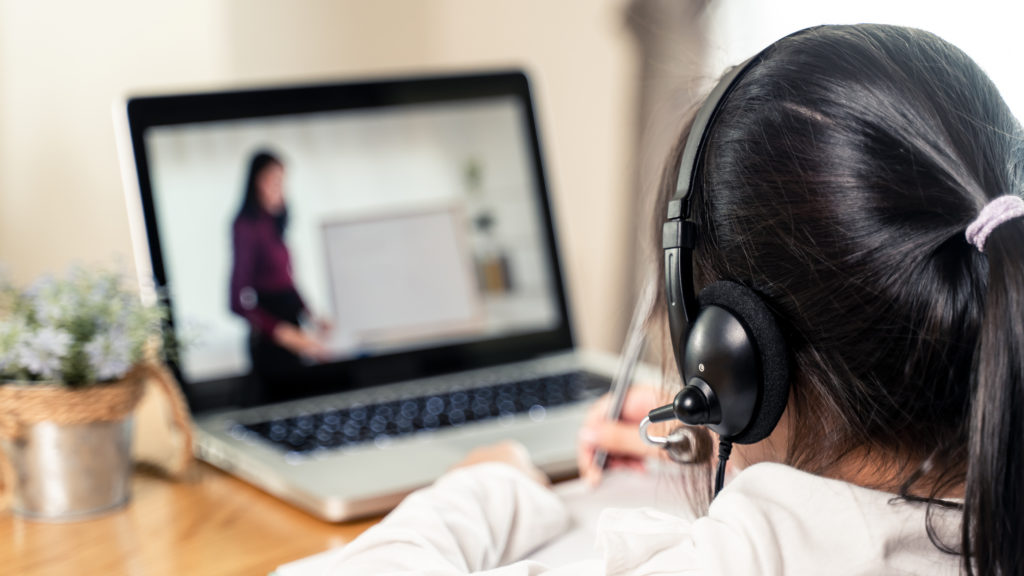This is the second blog post in our Notes from the Field: Special Education blog series.
In the early days of the pandemic, schools scrambled to address new and daunting priorities like distributing meals to students and setting families and teachers up for remote learning. Unfortunately, in the frenzy, many schools failed to communicate sufficiently with the families who had children with disabilities. In interviews with special education parents, one study found that exchanges were scarce and generalized—mostly focused on health and safety, especially in the spring. CRPE reported in a previous blog that some families believed that schools were treating special education as an afterthought.
Since the fall of 2020 we have talked with more than 60 teachers, administrators, and parents of children with disabilities in 15 schools across the country about their experiences during the pandemic. Almost without exception, the schools experienced bumpy months last spring. But this school year, they have learned how to leverage technology and remote learning tools to restore—and improve—communication with families.
These efforts not only helped sustain students’ engagement in learning during the pandemic, they have also laid the groundwork for a more productive family-school partnership moving forward. As more in-person schooling resumes, schools should continue to apply these lessons and technology tools to shore up communication with families with children with disabilities.
Using technology to stay connected and engaged in students’ learning
Schools in our study have found that several technologies—some unexpectedly—have helped them customize outreach and engagement with families.
For the first time, many teachers made routine use of common communication tools like texting and WhatsApp for reaching out to families. Several teachers told us that texting became the preferred method of connecting with parents during the pandemic. That enabled much quicker check-ins with parents—when teachers noticed students were not logged into class, for instance. Special education parents appreciated having an easy way to ask how to best support their children with remote learning or get an urgent question answered. There is no reason schools shouldn’t continue to use these tools long after the pandemic abates.
Virtual IEP meetings and parent-teacher conferences have also been a helpful shift. In another blog in this series we examined how the virtual IEP meeting has not only made scheduling easier but has also enabled a better balance of power between educators and parents. One school mentioned an increase in attendance from 80 percent to 95 percent at parent-teacher conferences as a result of the shift to online.
Several features of remote schooling have provided parents with a valuable window into their childrens’ learning. Virtual classes allowed parents to see firsthand how their child engages with teachers, as well as better understand the material and the teacher’s approach. They can also pop into the screen to ask impromptu questions. All of this gives teachers a firmer basis with which to discuss with parents their child’s learning plan.
One parent described how helping her son with remote learning revealed much more about his learning challenges:
“As a parent, now I need to pay more attention, for example, if he needs help with a program or something like that. . . . Now that I’m closer to him regarding school, I can see if he has any problems. . . . That’s something positive when you feel closer and when you can see what your son is doing at school.”
Now that many related service sessions, like speech or occupational therapy, are online, parents can more easily attend and see their children’s progress firsthand. One special education administrator shared with us how wonderful it is to see parents more involved in these sessions:
“Once the session is done the mom would stay on and say, ‘All right, show me that again. How did you do that?’ So there is a huge increase in parent partnership in a very meaningful way that had never existed. And for me that is by far the greatest joy that has come out of this. It’s been beautiful.”
Parents have also tapped learning management and communication platforms like Google Classroom, Class Dojo, and Seesaw to better understand what their children are working on and whether they are up to date with assignments. One parent summed up the way she uses these tools:
“I have everything in writing and it is uploaded to virtual school, so I can work with [my son] independently to help him with the project. We have directions. We have everything we need to do it from home. And I can communicate with the teachers about it as needed. We have good communication with the teachers and staff.”
We learned about some creative use of technology to share information on students’ progress and set goals. For example, one parent shared a video of her daughter achieving a physical therapy goal with the case manager to help make the case that she was capable of being more challenged. Parents also report sharing work samples from home to show progress toward IEP goals and alternative ways of demonstrating mastery.
Technology alone is not enough
Technology has been a big boon for communication and parent engagement but it hasn’t worked for all families—particularly those who work outside the home. One special educator explained, “There are students that I have not seen or heard from despite calls, texts, communication, emails.”
School staff said they often found that parents need help and training to use tools like Class Dojo, Seesaw, and Google Classroom. While this kind of support should continue, the tools and training should not be forced upon parents.
Some parents also shared that they miss the informal and impromptu conversations that used to happen when they dropped by the school. One parent told us:
“When [my son] was going to school, you got to pick up your kids from the classroom. You get to communicate with the teacher every day. Now with it being virtual, I don’t communicate with the teacher every day—only if there is a need or concern.”
It’s important that schools embrace a variety of communication strategies and tools whenever possible with an eye toward reaching and empowering families who have struggled most to stay connected. Those might include parents of English language learners and those experiencing significant economic strain.
Helping parents stay on as more active partners—even after the pandemic ends
The parents we spoke with reported that increased and individualized communication, as well as new technology, have helped them become a more active partner in their children’s learning. Parents say they feel more comfortable in the driver’s seat: more empowered to start conversations with their children’s teachers and providers, and to disagree with them when they see strategies that don’t work.
There is no replacement for rich conversations and face-to-face connections. Most of us are eager for the opportunity to catch up during pick up, drop off, and school events. As these opportunities return next year, hopefully they will be complemented with strategies and tools discovered this year to support an even deeper and enduring partnership between educators and families.





